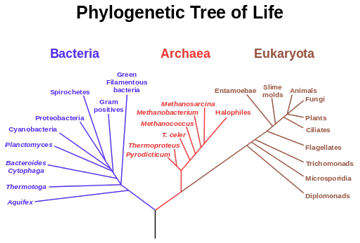Biosphere Contents
2. Diversity
The way in which living organisms are classified at the highest levels has changed several times, and is likely to be revised again in future

The first subdivision of living things recognised two kingdoms - plants and animals - but it subsequently became clear that this is too simplistic. Fungi are more closely related to animals than to green plants, for example. In 1969 five kingdoms were recognised, comprising what are familiarly termed the bacteria, the protozoans, the fungi, the plants and the animals. In 1990, Carl Woese proposed a new category known as domain, above the level of kingdom. The eukaryotes, a group which includes all plants, animals, fungi and protozoans, represent a single domain, with the other domains being Bacteria and Archaea (a group of single-celled microorganisms that specialise in extreme environments). Eukaryotes were formed by a fusion of their ancestors with free living bacteria which became engulfed within their cells and developed into mitochondria. In plants, another similar process also resulted in the formation of chloroplasts.
What are the three domains and four eukaryote kingdoms?